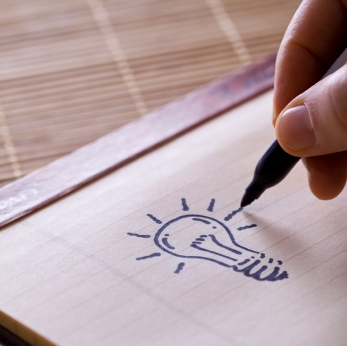 You shouldn’t have to live in fear of facing your utility bills each month at the workplace! One of the most effective ways to conserve energy is to cut down on the amount of electricity, natural gas and other fuels we use while trying to bring the temperatures in our office buildings to comfortable levels. According to Energy Star, an Environmental Protection Agency program that advises businesses and individuals on eco-friendly energy savings, up to 30 percent of the energy generated to heat, cool and light the average commercial building is wasted.
You shouldn’t have to live in fear of facing your utility bills each month at the workplace! One of the most effective ways to conserve energy is to cut down on the amount of electricity, natural gas and other fuels we use while trying to bring the temperatures in our office buildings to comfortable levels. According to Energy Star, an Environmental Protection Agency program that advises businesses and individuals on eco-friendly energy savings, up to 30 percent of the energy generated to heat, cool and light the average commercial building is wasted.
Weatherproofing your doors, windows and skylights is the best way to make sure unconditioned air is not seeping in to or out of your office. And while weatherproofing can help you save on your utility bill, it can also put a dent in your annual taxes by applying your improvements toward tax deductions offered by Uncle Sam.
Keep the Air In – or Out
Here are some reasonably fast and easy ways to effectively seal your office’s doors and windows:
- Weather stripping – Made of vinyl or rubber, weather stripping fastens to the sides and top of the door casing with nails or staples.
- Start at the bottom – The biggest draft often comes in under the door. To solve this problem, install a sweep to the bottom of the door, either with nails or an adhesive.
- An easy fix – Snakes, which are long fabric tubes filled with sand, can be used to keep air from leaving or entering beneath the door or through a window.
- A little more difficult – Putting film over windows will help save energy, but it might entail a little more work than other options. Double-sided tape will hold the film in place, and you can use a hair dryer to shrink the film so it will stretch tightly across the window.
- An old standby – Heavy drapes have done the job of stopping drafts for centuries. Drapes with insulated lining work even better.
The Right Way
Caulking all the places where air might leak in or out might be a little time consuming, but it’s certainly worth the effort. Here are some tips on how to do the job right:
- Take care of all the leaks – Seal around doors, windows and plumbing, and don’t forget about attics, basements and crawl spaces.
- Out with the old – Use a razor blade to get rid of old caulk and clean surfaces thoroughly before applying new caulk.
- Use the gun – Caulk cartridges were made for use with a caulking gun. Don’t try to save a few dollars by not using one.
- Where you cut counts – Cut the opening of the tube near the top for a thin bead of caulk and further from the top if the job requires a thicker bead.
- Finish the job – Once you apply the caulk, you’ll need to smooth it out and make sure it fills the gaps. You can buy a smoothing tool, but your finger will probably work just as well.
A Tax Break
You can also recover some of the costs of weatherproofing your office building through tax deductions under the American Recovery and Reinvestment Act of 2009:
- Business owners can earn a deduction of up to $1.80 per square foot for commercial buildings that save at least 50 percent on energy costs for lighting, heating and cooling.
- Additional deductions of up to 60 cents per square foot are possible for building owners who can show that they have enhanced the efficiency of individual lighting, water heating, cooling and heating systems.
- These deductions apply to commercial buildings or systems placed in service through the end of 2013.
Weatherproofing your office will make your work environment more comfortable and save you money in energy costs as well.
Brent Hardy manages sustainability programs for Extra Space Storage. The self storage facility in Las Vegas has been retrofitted to reduce energy consumption.